Creating content can be arduous even if you are a pro. The list of things you’ve got to do to create the perfect piece of content is endless. You’ll have to consider hundreds of strategies and tactics while you write, maintain a tone that isn’t too promotional, implement SEO techniques that you hope will help, and you have to do these and more with a limited supply of time, money and resources.
While automation is possible in other parts of marketing, creating content is still very manual. But, there are hundreds of really cool and powerful content marketing tools available that help you create great content.
And, here we go!
- Content Research Tools
- Content Creation Tools
- Content Analysis Tools
- Competitor Analysis Tools
- Content Curation Tools
- Content Distribution Platforms
- Other Best Content Marketing Tools
Content Research Tools
Free Content Marketing Tools
Google Drive -> Tools -> Explore
It can be annoying to switch tabs just to see if you’ve got your facts straight. Google, recently added a tool that allows you to search online without ever leaving your drive window.
Here’s how it works:
- Click “Tools” on the menu bar.
- Select “Explore” and voila!
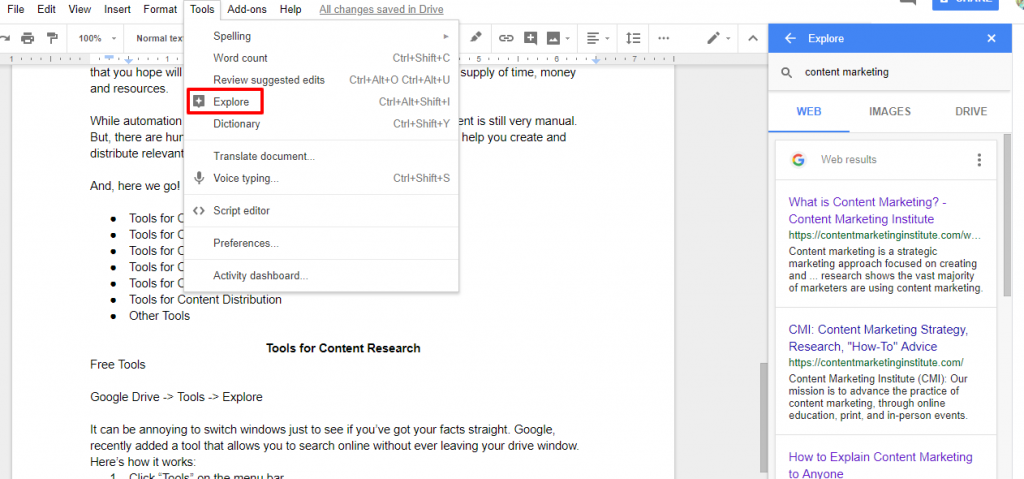
Site: Search
When you want to look for a particular topic from a specific website, this hack comes in handy.
For example: If I wanted to look for articles related to content marketing from TechCrunch, I would type in site:techcrunch.com content marketing.
This is the formula that you should use. site:samplewebsite.com [search query]
Here’s the result.

Google trends
Google Trends is an official Google tool that offers a visual comparison of traffic levels. It is a tool that can tell you what is and what was trending over a given period of time.
However, it does not show you the exact amount of traffic. But it does show a relative amount.
It also has the capability to narrow down your keywords according to categories in order to give more accurate data on keywords and by geographic location for determining what areas are the best to outreach to or for tailoring the content to suit specific locations and regions.

One of the most useful features in Google Trends is the ability to gain insight into keyword phrases that are rising. It means that Trends has predicted that the searches for these keywords are rising and are predicted to rise further. This will enable you to pick up on new opportunities and write content that appeals to current trends.
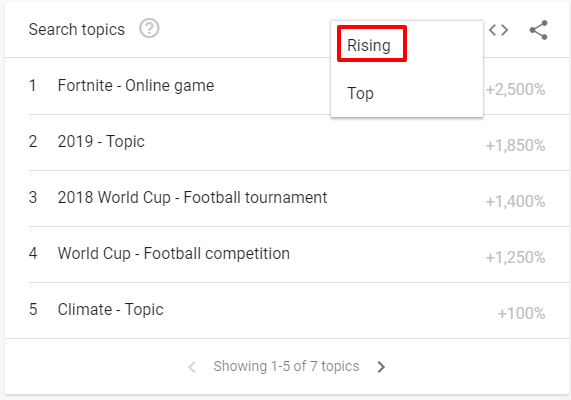
Keywords everywhere: Keyword Tool
If you want to start with SEO and are tired of using a lot of tools to extract keywords, site rankings, DA, CPC, and competition, you’ll be more than glad to know that “The Keywords Everywhere” extension is a FREE SEO keyword research tool and it shows you google keyword search volume and cost per click data on multiple websites.
Once you download this tool, you’ll be waving goodbye to all the time you’ve spent researching and comparing keywords on different tools and platforms. In this tool, you can quickly get the search volume for any keyword by going directly to Google and typing it in. The tool directly displays the search volume for that keyword right after you click “search”. It also lists additional keywords. Here’s an example: When I type in “unique places to visit in Italy”, you’ll see the search volume for the keyword and it also displays the cost-per-click (CPC) of the keyword and competition data.
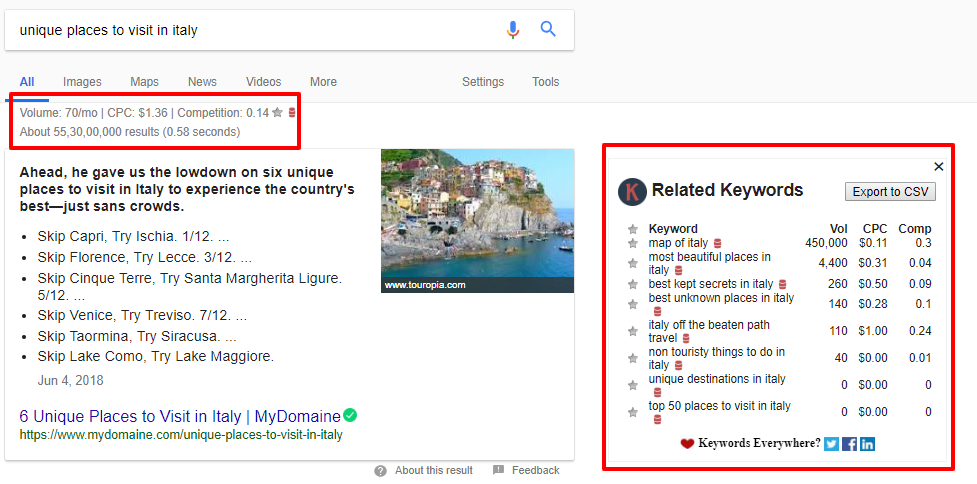
When you hit search, the tool will also display “Related Keywords”. And when you go to the bottom of Google’s page 1 results, you’ll see a lot more keyword suggestions with data.

Keyword Planner – Google Ads
Google’s Keyword Planner was under flak ever since it stopped showing the exact monthly search volumes. But if you really want to see them, you’ll have to run an ad campaign which costs money.
But, you don’t have to be put off by this as the Keyword Planner is still insanely powerful.
It has two options. Both choices will take you to the Keyword Plan, but what you see will vary slightly depending on your choice.
- Find keywords: If you select this, then you’ll get keyword ideas that can help you reach people interested in your product or service.
- Get search volume and forecasts: When you select this, you’ll be able to see the search volume and other historical metrics for your chosen keywords, as well as forecasts for how they might perform in the future.
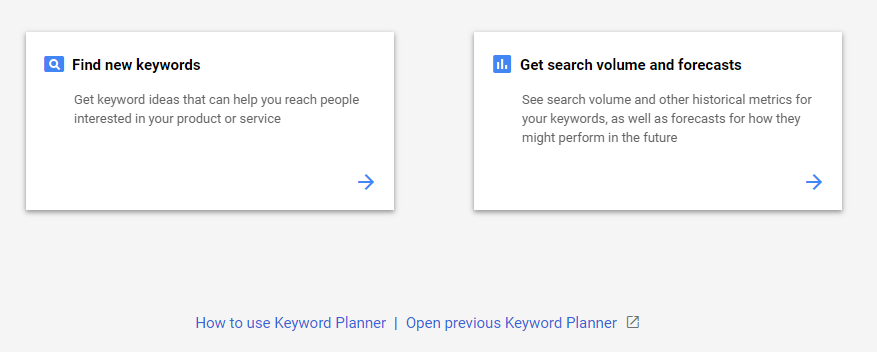
Here are all the things you can achieve from Google Keyword Planner without an ad campaign.
- Spy on competitor’s keywords.
- Find what keyword to focus on based on search volume and location.
- Find topics to blog about.
Atlas – find graphs related to what you’re working on
Atlas by Quartz is full of graphs, charts, and data visualizations. All you have to do is search for almost any topic or keyword, and Atlas will have a graphic or a chart based on recent research data for you. This tool is great to get background information on a topic or a project you’re researching, or to find fresh data to use in something you’re working on.
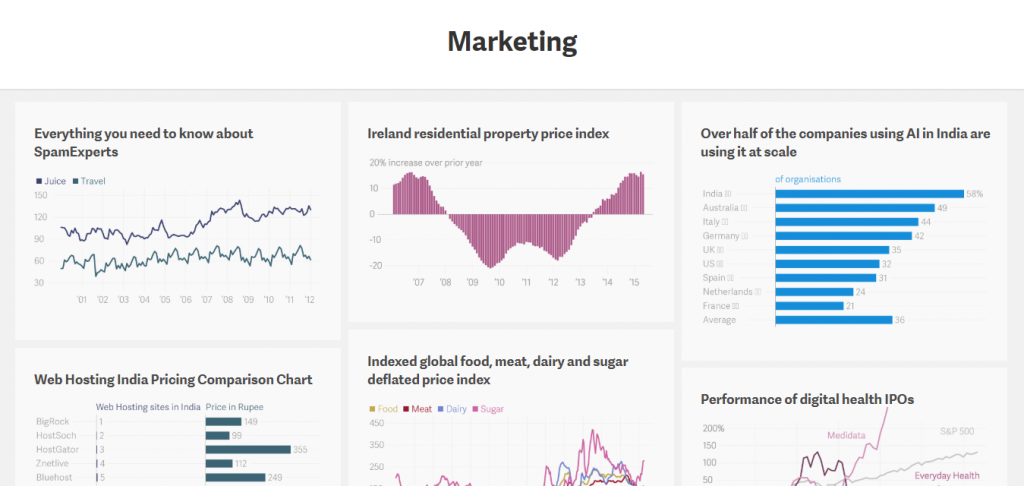
Ubersuggest
Ubersuggest helps you generate keyword ideas for your content marketing strategy and production. The updated Ubersuggest (after Neil Patel acquired it) pulls in keyword data from Google Keyword Planner and Google Suggest—and the result is a vastly improved keyword research tool.
Here are some things that can be found via Ubersuggest.
- Search volume for any keyword in any country and language over the course of the last 12 months.
- There’s a graph that will show you if the keyword is gaining or declining in popularity.
- You can also view the cost per click, the SEO difficulty, and the paid difficulty.
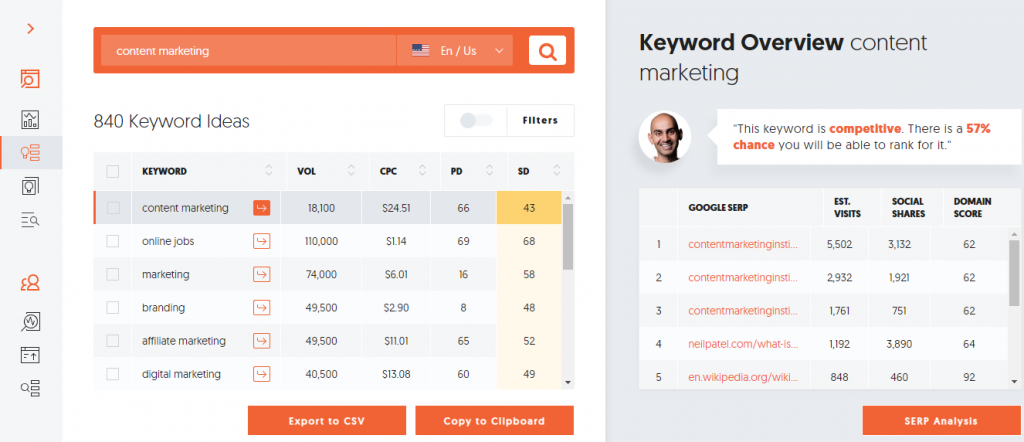
Modest fee
SpyFu
SpyFu is an SEO tool that lets you look into your competitor’s keyword research campaign including the PPC estimates and the keywords they use and buy.
SpyFu digs deep into all the keywords a site ranks for, how their competitors fare, and what the opportunities are across organic and paid traffic. One of its notable features is its Kombat feature which allows a user to compare up to 3 domains at the same time and the tool has been praised for its Venn diagrams which compare the domains and makes the explanation easy.
Here’s SpyFu’s pricing.
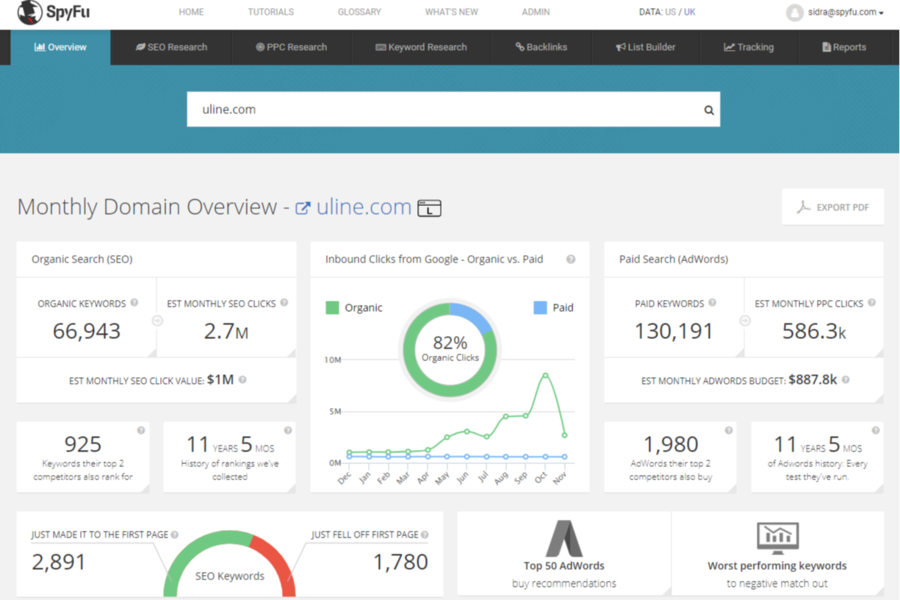
SEMRush
SEMRush is probably one of the favorites among content marketers as it provides both short- and long-tail keyword research, as well as information on keywords for both PPC and organic traffic. You can view all the keywords your company/brand is ranking for organically and also view the keywords that your competitors are gaining organic rankings for. These are just some of its features and thankfully the tool comes with a 14-day free trial.
Social Animal is a content research tool that also facilitates curation and helps you create working content marketing and Facebook strategies.
The tool offers a free trial for 14 days.
The tools’ most salient features include,
- Finding top performing content in each social media platform along with the number of shares an article’s got.
- It’s Insights feature which tells you when and where to post with optimal title and content length for any topic/keyword.
- Influencer Search – This feature lets you look for Influencers for any keyword and also lets you see the articles they’ve shared.
To signup, click here. To view the pricing, click here.
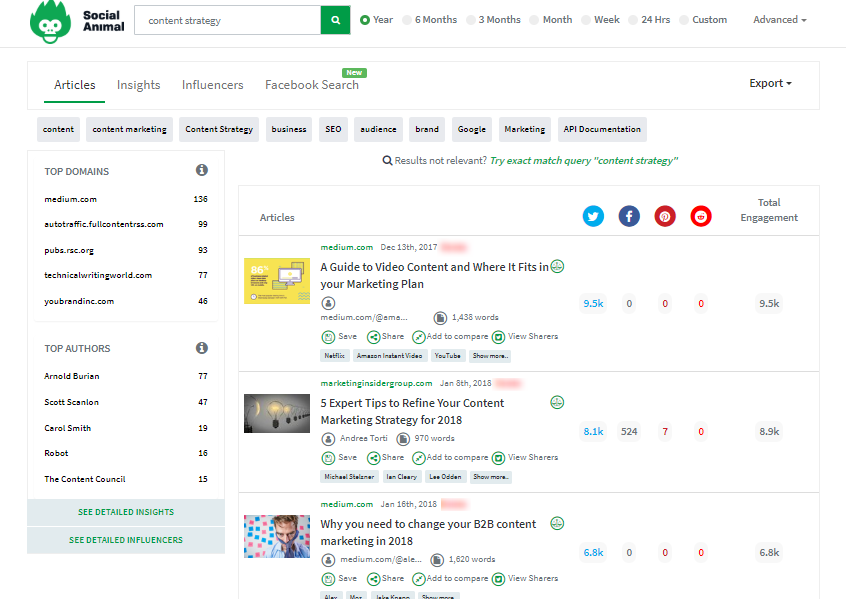
LongtailPro
LongTailPro is a keyword research tool which costs $37/month and comes with a 7-day free trial. The best feature that LongtailPro has to offer is Keyword Competitiveness which can help a marketer decide the difficulty of ranking for any keyword.
What every blogger and content writer needs is a list of keywords that have a decent level of search volume, and relatively easy competition (Keyword competitiveness) to give them a chance of being anywhere near the top of the rankings on any search engine.
This sounds so simple, but without something like LongTailPro, there’s no chance of unearthing those precious low-competition keywords. Here’s it’s pricing and here’s where you can sign up for a free trial.
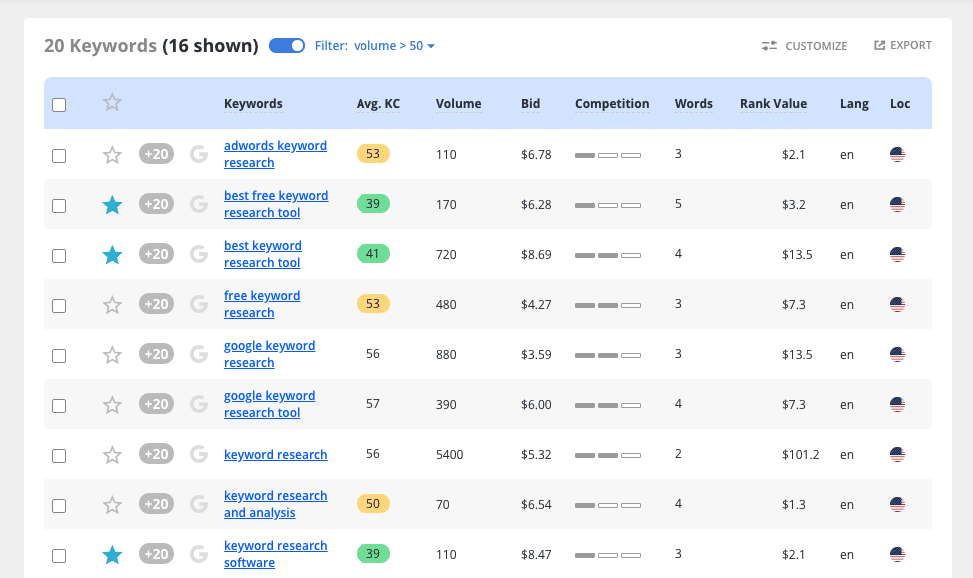
Content Creation Tools
Free Tools
Grammarly
Grammarly automatically detects grammar, spelling, punctuation, word choice, and style mistakes in your writing. All you have to do is download its free extension that is available for Chrome, Safari, Firefox, and Edge.
Grammarly will run automatically and helps you write correctly on nearly every site on the web.
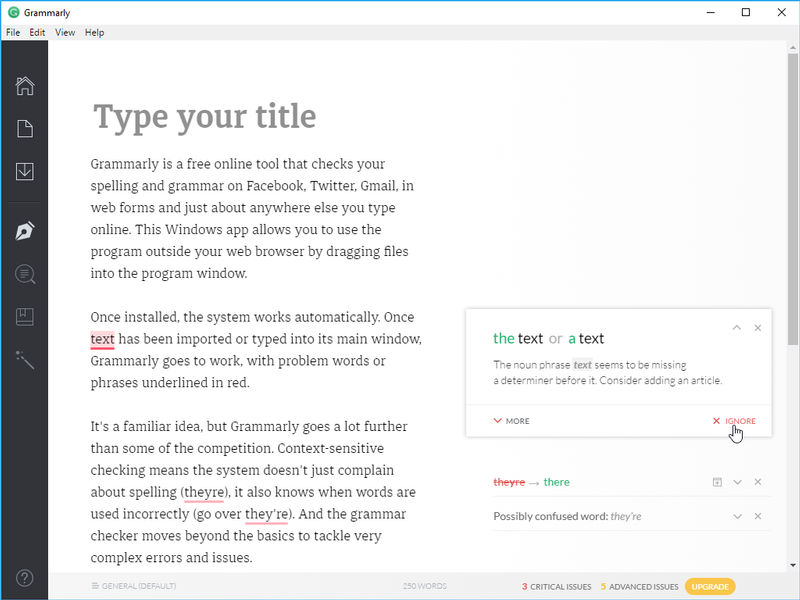
How does Grammarly work?
The tool’s algorithms flag potential issues in your text and suggest context-specific corrections for grammar, spelling, wordiness, style, punctuation, and even plagiarism. Grammarly then proceeds to explain the reasoning behind each correction so you can make an informed decision.
Evernote
You are highly mistaken if you think Evernote is nothing more than a note-taking tool.
Here are some of the things that you can do with Evernote.
- Stay updated as the notes you take are synced with all your devices.
- Share notes and whole notebooks with friends, classmates, coworkers, etc.
- Take and attach pictures to note right from within the app.
- Take and attach voice memos and audios from within the app.
- Attach files like spreadsheets, images, docs to any note.
- Scan text in a photo.
- Set reminders for yourself for various tasks
- Create checkboxes that serve as virtual to-do lists
There’s a premium version that offers a few bonus features, but the free version offers all of the above. Take a look at Evernote now.
CoSchedule headline analyzer
Headlines are important and research suggests that up to 80% of people may not even read your article if you don’t have a powerful headline that grabs people’s attention.
CoSchedule’s Headline Analyzer is a one-of-a-kind tool that shows you the quality and strength of your blog post title.
It analyzes and shows you the following,
The type of your headline – It checks to see if your article is a listicle or a how-to guide etc. Character count – Headlines that are 55 characters long, according to CoSchedule, earn a high level of clickthroughs.
Word count – Ideal headlines that receive the most clickthroughs are 6 words long.
CoSchedule also lets you see what words stand out for a reader when he/she skims through your title and the type of sentiment your title portrays.
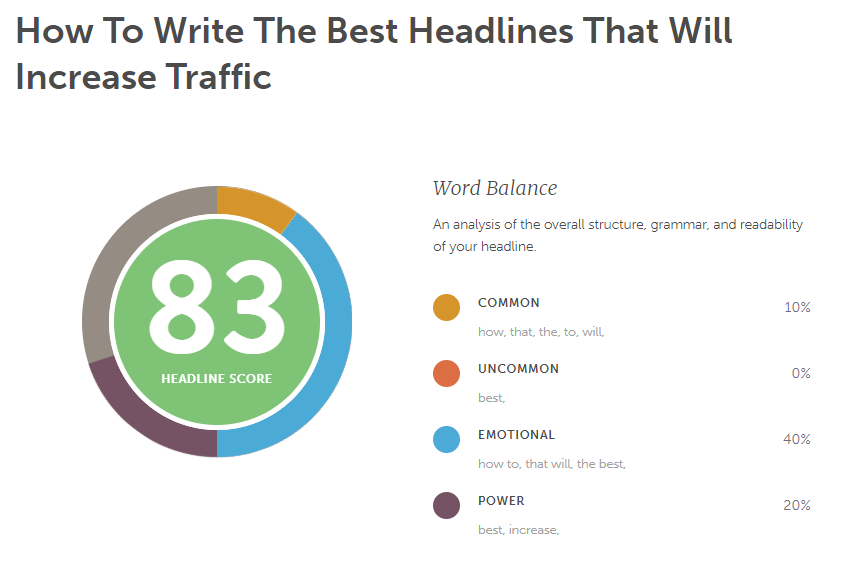
Weava
Weava is available as a Chrome extension that allows you to highlight, annotate, organize, and site content from PDFs (online or local), online journals, websites, and more. Users can use Weava to grab content from a variety of online sources and keep this content in one place during the writing process.
Users can drag the desired content right into Weava’s word processing tool, generate citations (although these may need to be tweaked), and then export their document to Word.
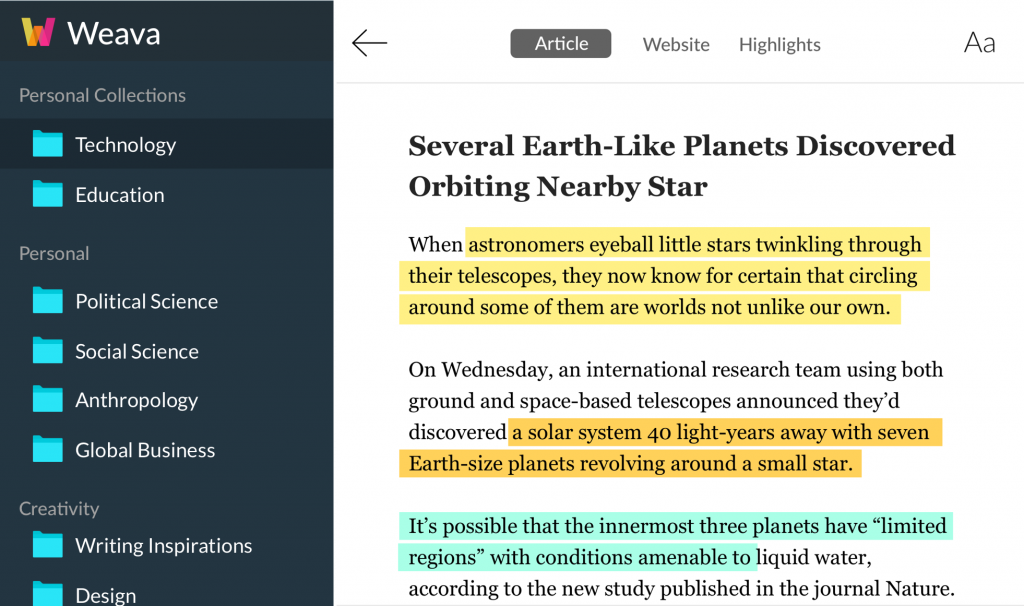
Hemingway App
The Hemingway Editor is a simple word processor and a proofreading tool designed for writers and bloggers. It can be accessed online or you can download the desktop version The app’s core use is to help users write in a simple, clear, and powerful manner. The tool can detect the presence of adverbs, hard to read sentences, complex words or phrases, and passive voice within a text and offers suggestions. Additionally, users can easily identify issues and mistakes as the app uses color codes to highlight the errors.
The latest version of the app comes with formatting features like enabling the applications of bold and italic font styles, as well, as to add bullets and headlines to a text. The app can also be integrated with Medium and WordPress. Thus, users will be able to publish their writings to Medium or WordPress directly from the app.
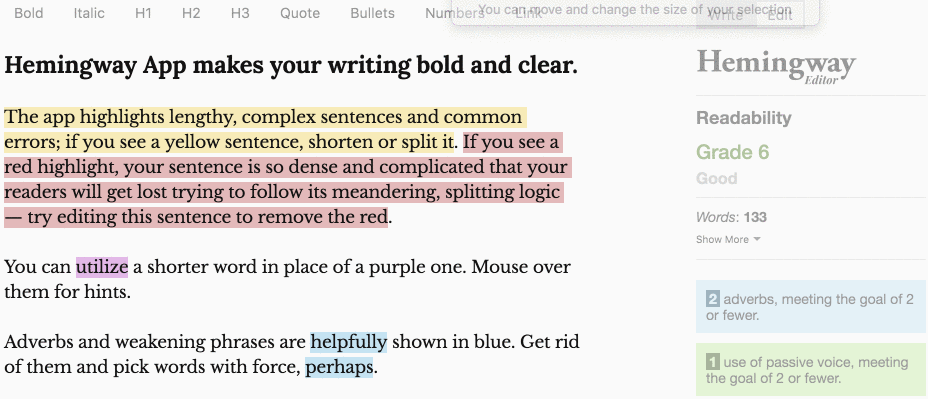
Moderately priced
CloudApp
In this era of social media platforms like Instagram and Facebook, it is easily known that visual content rules. But visuals are becoming important in articles and blogs too. Visual content like infographics and gifs make your article more appealing and easily readable.
CloudApp lets you create gifs, capture and annotate screenshots and screencasts, videos and lets you share them easily with your workforce and friends.
CloudApp does offer a Free Trial and a Free plan with limited features.
ProWritingAid
ProWritingAid is an online writing assistant that helps you check grammar and offers you editing advice. The app also lets you analyze your overall writing style with suggestions and corrections highlighted under different colors. It also tells you about the optimal sentence length for specific sentences and tells you if you’ve overused certain keywords.
The app comes with a free version that checks up to 500 words at a time. It also has a plagiarism checker that is priced separately.
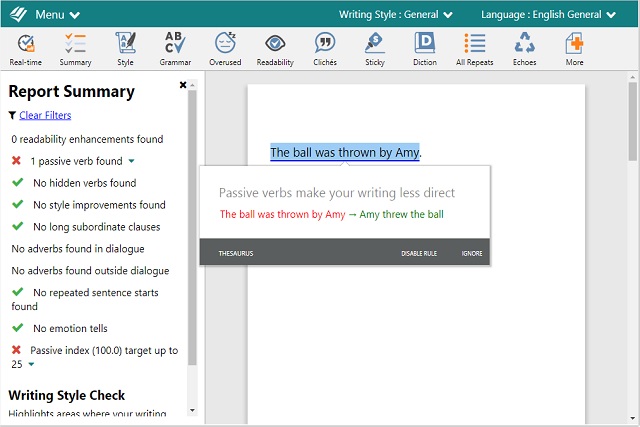

With HubSpot CMS, you have all the tools you need for content creation, distribution, and analytics, all in one place.
The tool allows you to create and edit blog posts, landing pages, site pages, and emails with ease, whether you choose from one of our pre-built templates or start from scratch. You’ll be backed by a world-class content delivery network to serve your content all across the globe in the fastest way possible.
HubSpot’s content management software tool has nice features like A/B testing, but it’s particularly powerful when it comes to features like personalized content and smart content. If you’re using HubSpot’s marketing platform, it also works seamlessly with forms, your email list, and database management.
There are also some great out-of-the-box features designed to help with content creation — like the ability to natively host video and add forms and calls-to-action in the video using the native editor, along with video analytics and a YouTube analytics integration.
Some of the features marketers will love on a platform level are the ability to partition content so it’s easier for teams to work together. Additionally, you can publish content behind passwords and easily personalize content. Best of all, there’s high-quality security and hosting, which takes the worry out of the technical side. And, of course, you get top-notch analytics since everything is working together.
Content Analysis Tools
Screaming Frog
Screaming Frog SEO Spider is a website crawler, that allows you to crawl websites’ URLs and fetch key onsite elements to analyze onsite SEO.
What does Screaming Frog do?
- Finding website errors. The tool lets you find errors on an entire website all at once.
- Easily analyze Page Titles & Meta descriptions. You can see an overview of the entire site including data such as title length, duplicate titles, and missing meta tags In one view.
- Track Internal and Outbound links per-page, check broken links and HTTP status codes.
And best of all, Screaming Frog is free for indexing any website with less than 500 pages.
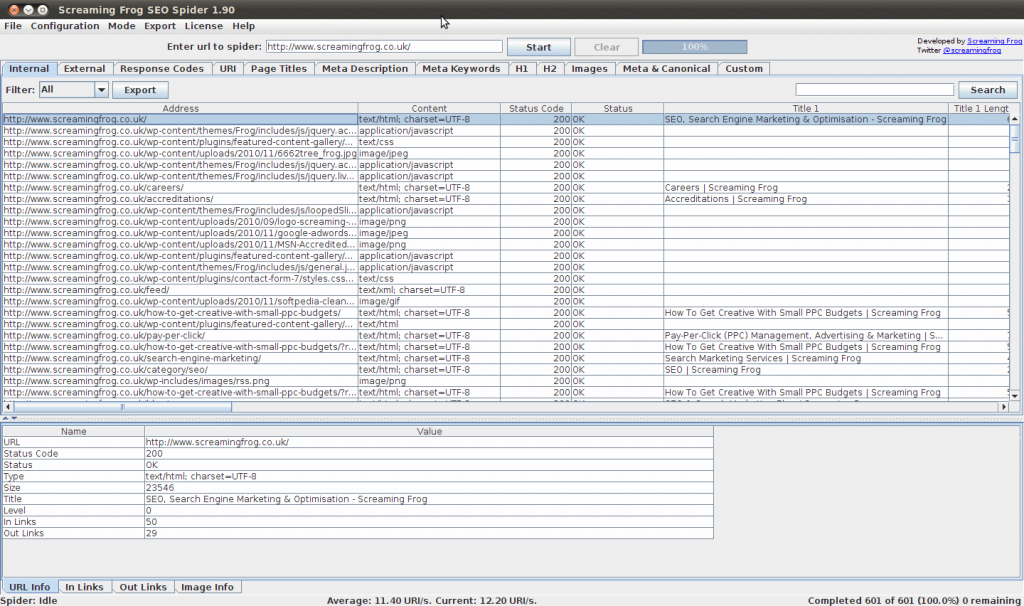
Check my links
As the name suggests, the tool does exactly that – Checks your links on any given page or a series of pages. The tool is known for its quick results as it usually checks all the links in about 10 seconds, tells you if the link is broken and even shows what kind of an error message the link leads to.
Install this absolutely free extension here.

Google Analytics
If you are a digital marketer then you’ll know that Google Analytics is indispensable as it shows you literally everything that happens on your website.
As a content marketer, you can use Google Analytics for the following purposes,
- To look at the traffic/ page report that shows pages getting the most traffic on your website. It also displays metrics such as time on site and bounce rate.
- Navigation Summary – This lets you see how a visitor got to your page and what do they do or where do they go after visiting a given page.
- Traffic from organic search – This is one of the most important data that a marketer must look into as this shows how your SEO techniques are working and what you need to do to rank better in organic searches.
- Conversions – Do you need your users/readers to do a specific action like download a pdf or signup for your newsletter or make a purchase? Then you’ll need to look into Conversions to see how your messages, promotions or Call to Action buttons are working out.
P.s, the basic version of Google Analytics is free.
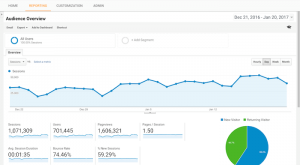

Keyword density(KD) is the percentage of times a keyword or phrase appears on a web page compared to the total number of words on the page.
Why do you need a tool like Keyword Density checker?
- To Perform competitor keyword research. You can quickly extract the most used keywords and keyword phrases by entering the URL from top performing competitors and find the keywords that you need to focus on.
- To check if your page is over-optimized and therefore vulnerable to specific updates from Google like the Panda update that was designed to keep low-quality content outside of the search engine index.
- To get an overview of the keyword usage for any webpage.
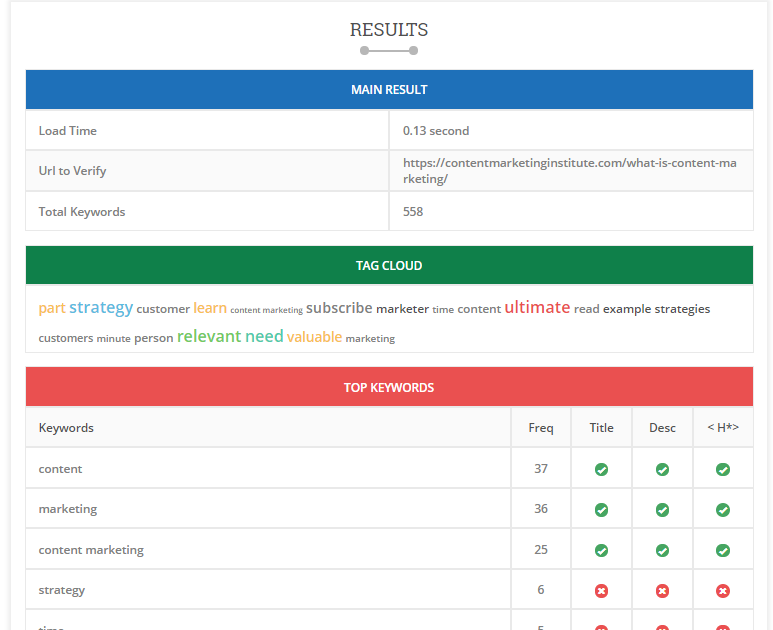
SEOQuake
SEOquake is a free plugin that provides you with key SEO metrics. Here’s some of the stuff that you can do with this plugin.
-
- Review all major metrics for a page in a heartbeat.
- Get a thorough analysis of SERPs and export the results in CSV format
- Estimate keyword difficulty in an instant
- Run a complete SEO audit of a webpage, including a check for mobile compatibility.
- Get a full report for internal/external links.
Install SEOQuake here.

Competitor Analysis Tools
Ahrefs
Competitor analysis is necessary to improve your website’s ranking. How do you do it?
Many SEO professionals use Ahrefs as it is considered to be one of the most reliable tools when it comes to understanding SEO.
Here’s how you can use Ahrefs to perform a competitor analysis.
- Identify competitors – Enter a keyword that you want to rank for or a keyword that is related to your niche. Ahrefs Keyword Explorer lists you sites that rank organically for the keywords that you entered. You could pick the sites that closely resemble or relate to what you do.
- Now use the URLs of these competitors to look for factors like Domain Rating and Ref Domain. The higher the numbers better are the rankings.
- Also, look at each competitor’s organic search data and the organic traffic they are driving from certain keywords.
- When you are doing the above step, look at the Keyword difficulty score to learn how you will fare if you create content based on that keyword.
- Monitor their link growth by looking at the links they get every month.
Content Curation Tools
Twitter lists
Twitter Lists is one of the most underutilized features of Twitter. You could create different Twitter lists for your audience, personal and your other interests. This lets you look at what you want and not miss any stuff that you actually want to follow. When you organize Twitter lists based on the kinds of content and influencers you want to follow, you can easily curate content from each list. You can also subscribe to other Twitter lists to stay updated on content that people with your similar interests post.
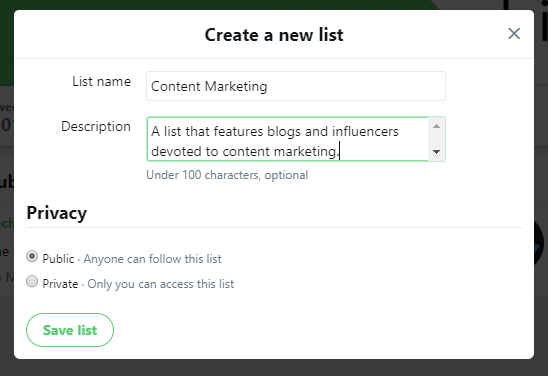
Scoop.it
Julia McCoy calls Scoop.it a “Curation search engine”. And like she suggests, Scoop.it makes curation easy with its distinguishable features like integration with tools like Hootsuite, WordPress and schedule content in advance.
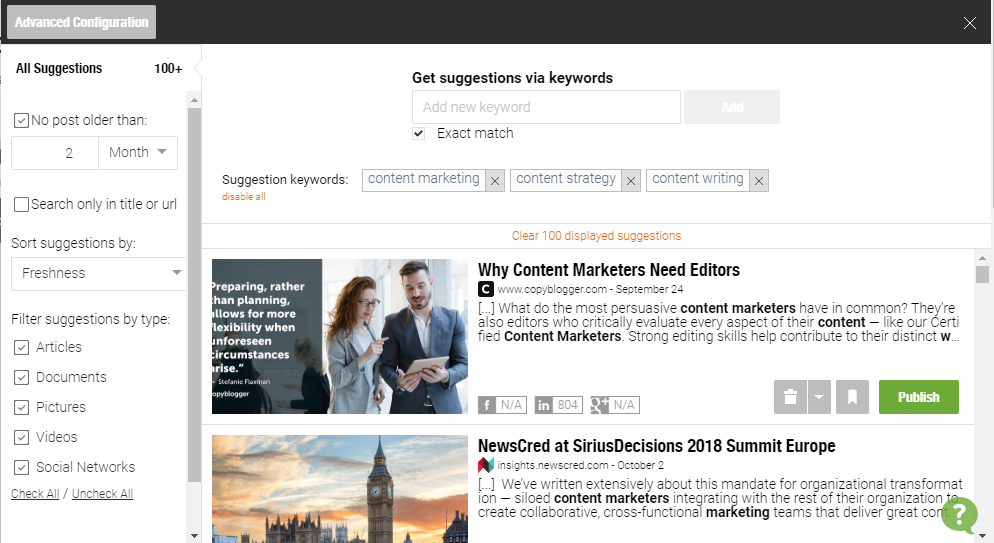
Social Animal
This content marketing tool as mentioned above can be used to curate content. When it comes to content curation, you cannot share any article and expect it to gain likes or retweets. You must curate content that is “shareable”. This can be done by looking at articles that are already doing well in social media platforms. Use advanced features like “Shared in the past” as opposed to “Published in the past” to obtain articles that are trending and being shared at any given time.
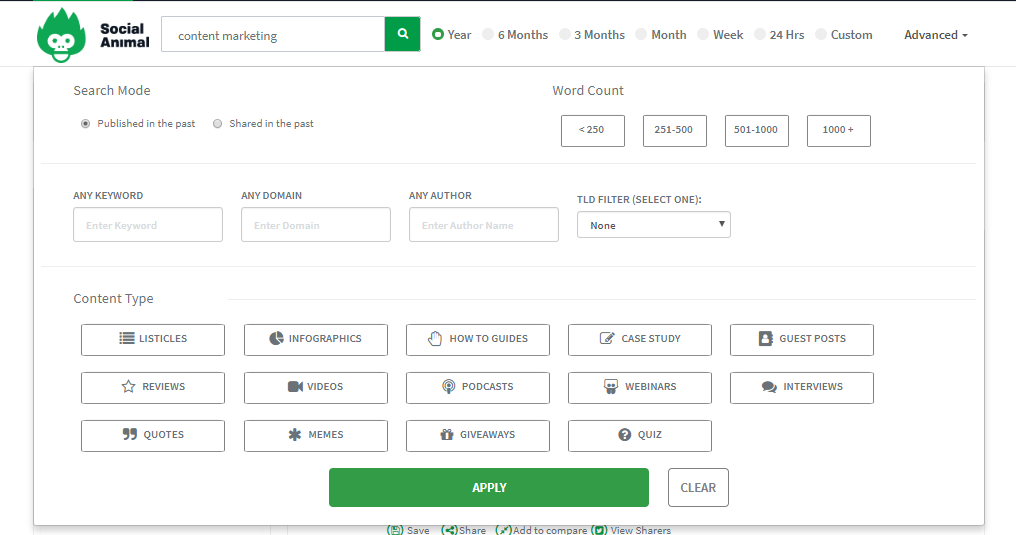
Pinterest is a virtual pinboard and is very simple to use. But how can you use it for content curation?
- Search for content using keywords. Narrow it down by the different categories displayed.
- Create a board and pin everything that catches your attention.
- Now, you have an organized board filled with pinned content that you can readily share.
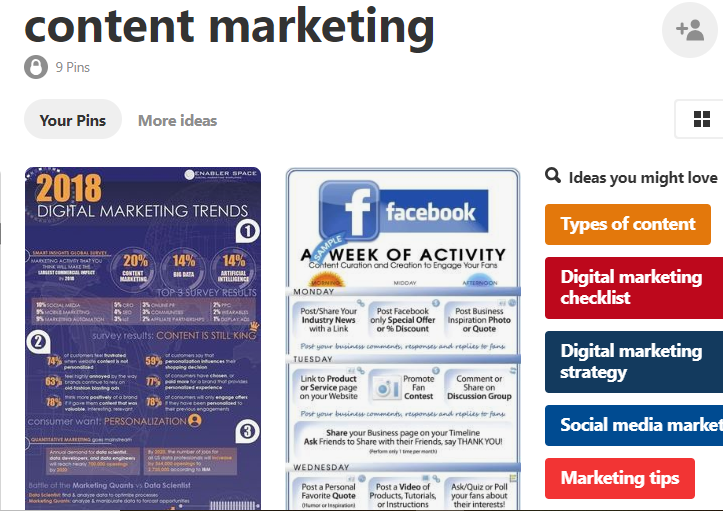
Pocket’s unique feature lets you capture and save content from anywhere. You can then leisurely peruse it at your own pace even if you are offline. This makes for a great curation tool as you can save all kinds of content in a single space and share it later.

Content Distribution Platforms
Hootsuite
Hootsuite is often referred to as a “Social media management tool” and like it suggests, it helps you manage multiple social media platforms by bringing them all under a single interface.
Hootsuite lets you,
- Monitor your brand mentions in different social media platforms and enables you to answer them instantly.
- It also lets you schedule content in advance.
- You can even add more than one account from the same social media platform.
- Lets you connect with over 35 social media platforms including Facebook, Twitter, Instagram, and Google+.
Here’s Hootsuite’s pricing plan.
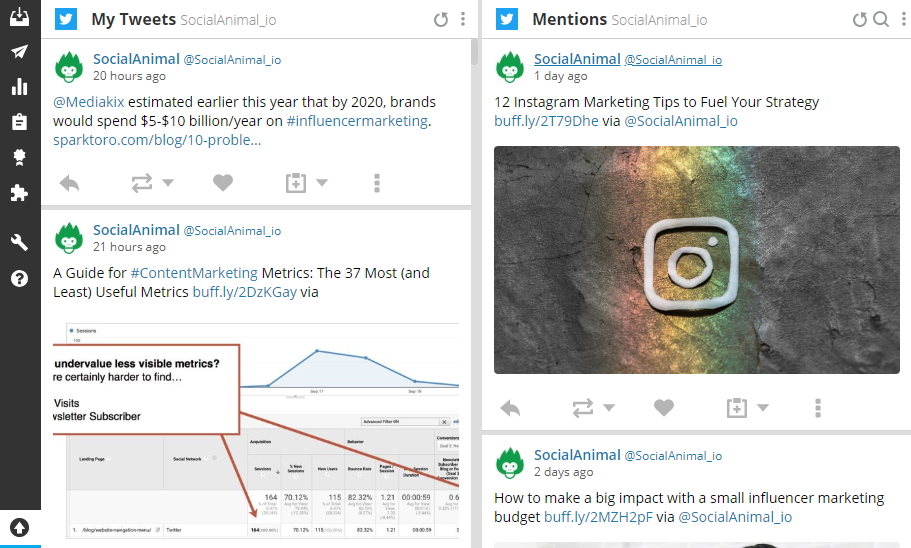
Buffer
Buffer like Hootsuite lets you schedule content in advance for different social media platforms like Twitter and Facebook.
Buffer also provides data for analysis based on the interactions occurred in different social media platforms.
To know how to curate a week’s worth of content with Buffer in 15 minutes, click here.
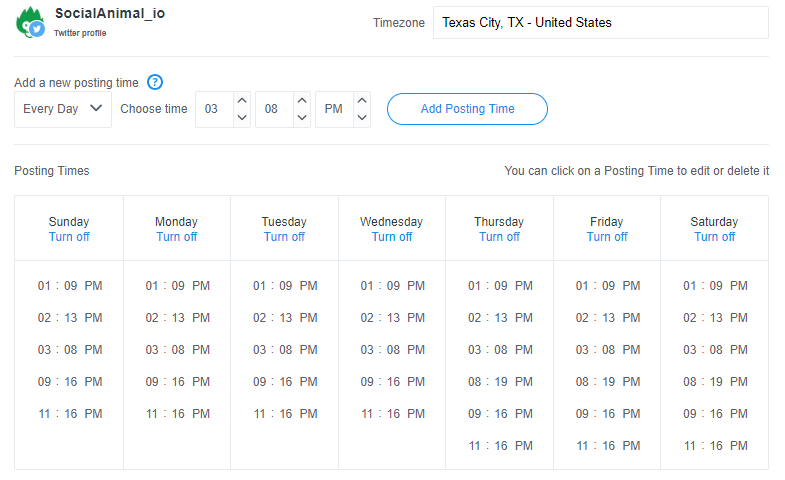
Taboola
Taboola is a sponsored content network and power those “sponsored links” and “stories that you might like” that you often see when you are reading or looking through any site. Taboola is often referred to as a “Content amplification tool”. Taboola acts like the middleman between publishers and advertisers. Once you sign your bog up, Taboola reviews your content to see if it’s fit and then shares it across various sites. With luck, your content may even show up on the “recommended section” under NBC News, Daily Mail, The Weather Channel, EuroSport, and more.

Other Best Content Marketing Tools
Images: To add images that are copyright free, use the following sites.
Image creation:
Canva
Canva is a graphic design tool that lets you create presentations and images for social media. The tool is free and only charges if you use a few selected layouts and templates. But this shouldn’t worry you as there are enough free templates to satisfy any graphic designer. The interface is very user-friendly and the templates that are available for each social media platform helps the user create images suited to that platform.
The tool also lets you share your images and presentations with your team.

Video creation:
Video marketing is growing in popularity and volume. But has it replaced content marketing? The answer is No. Video Marketing has simply become a part of the content and social media marketing. Here are some tools that you’ll need to create awesome videos.
Biteable
Biteable is a video creation platform that makes it easy to create business videos using pre-established templates and stock footage. Originally it’s 80 character limit per slide was considered restrictive but users soon found that this actually helps and the slides don’t end up being “too wordy”. Biteable does offer a free plan but it’ll cost you if you need to export the video.
Here’s Biteable’s pricing.

Animaker
Animaker is a cloud-based DIY video Animation software and like Biteable it lets users create animated videos using pre-built characters and templates. But unlike Biteable, Animaker lets you export your video without an upgrade. But this will leave a watermark.
Take a look at Animaker.
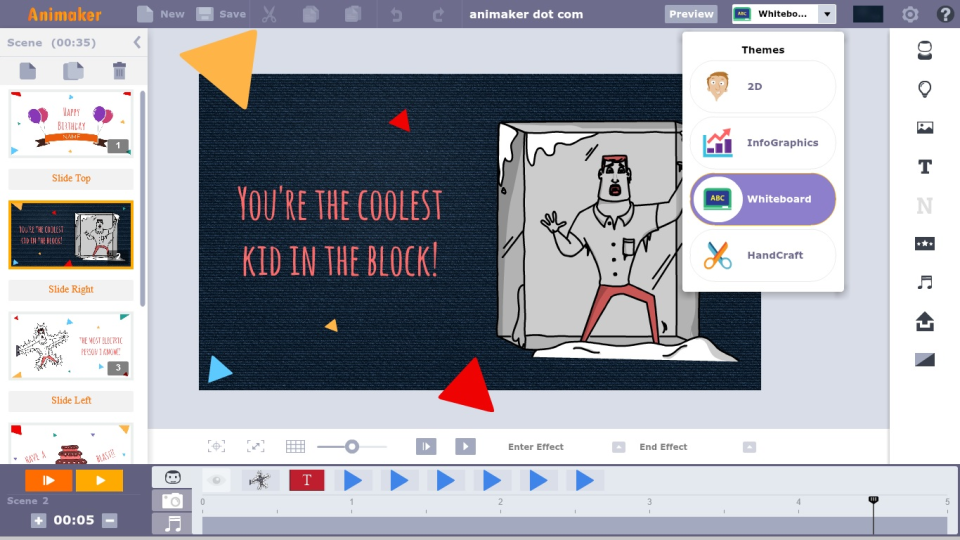
Animoto
Animoto is a cloud-based video creation service that produces a video from photos, video clips, and music into video slideshows. According to users, the best feature in this software is its ease of use. It is easy to add photos and videos to the slides and then adjust their pace according to how you want. Animoto offers a free trial for 14 days after which you’ll have to pay a modest fee of $8 per month.
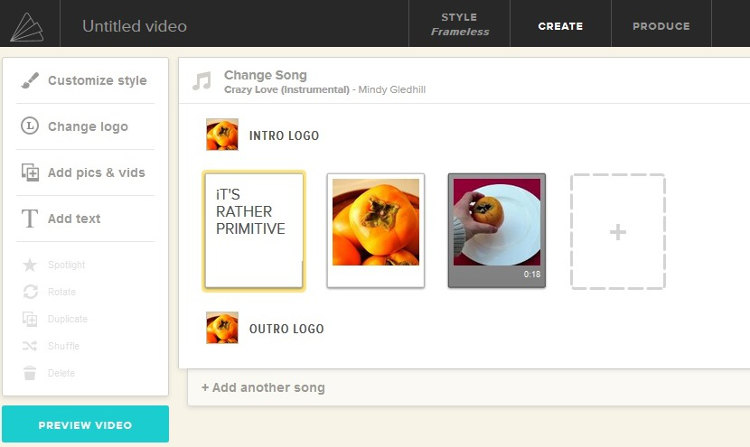
Create Surveys:
Survey Anyplace
This is an online tool to create engaging surveys, quizzes, and assessments.
The use of interactive questionnaires is a great way to make your content more engaging and increase conversions. Compared to static content, interactive content such as quizzes and interactive questionnaires generate twice as many conversions according to research.
Survey Anyplace has loads of features allowing content marketers to create a great, interactive experience:
1. Automatic design – detecting the colors of your logo and automatically applying these to the survey design.
2. The Question Skip feature directs participants to relevant follow-up questions
3. Text-only screens return information to participants and make the experience more conversational
4. Embed code to put the questionnaire on your website
5. Custom final screen and scoring depending on the answers to the questions.
There is a free plan available and the paid plan starts at $29 per month. The majority of the interactive features are included in the Professional Plan, which is priced at $49/month or $499/year.

That’s all, folks!
Now with this list of tools for every step of content marketing, you are sure to nail it.
